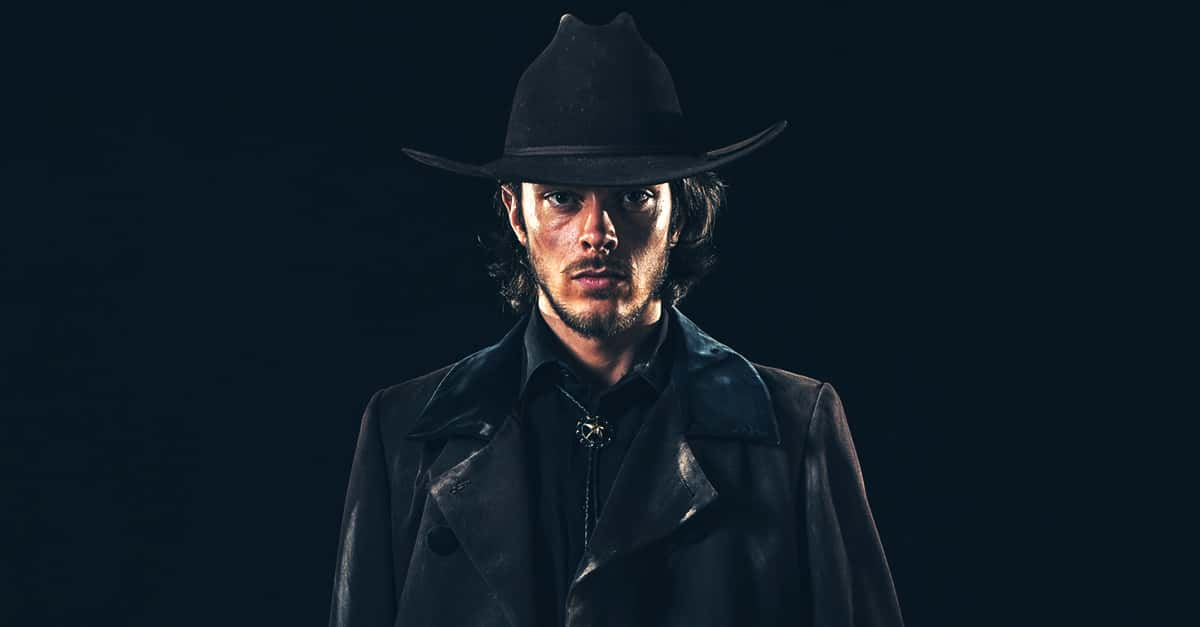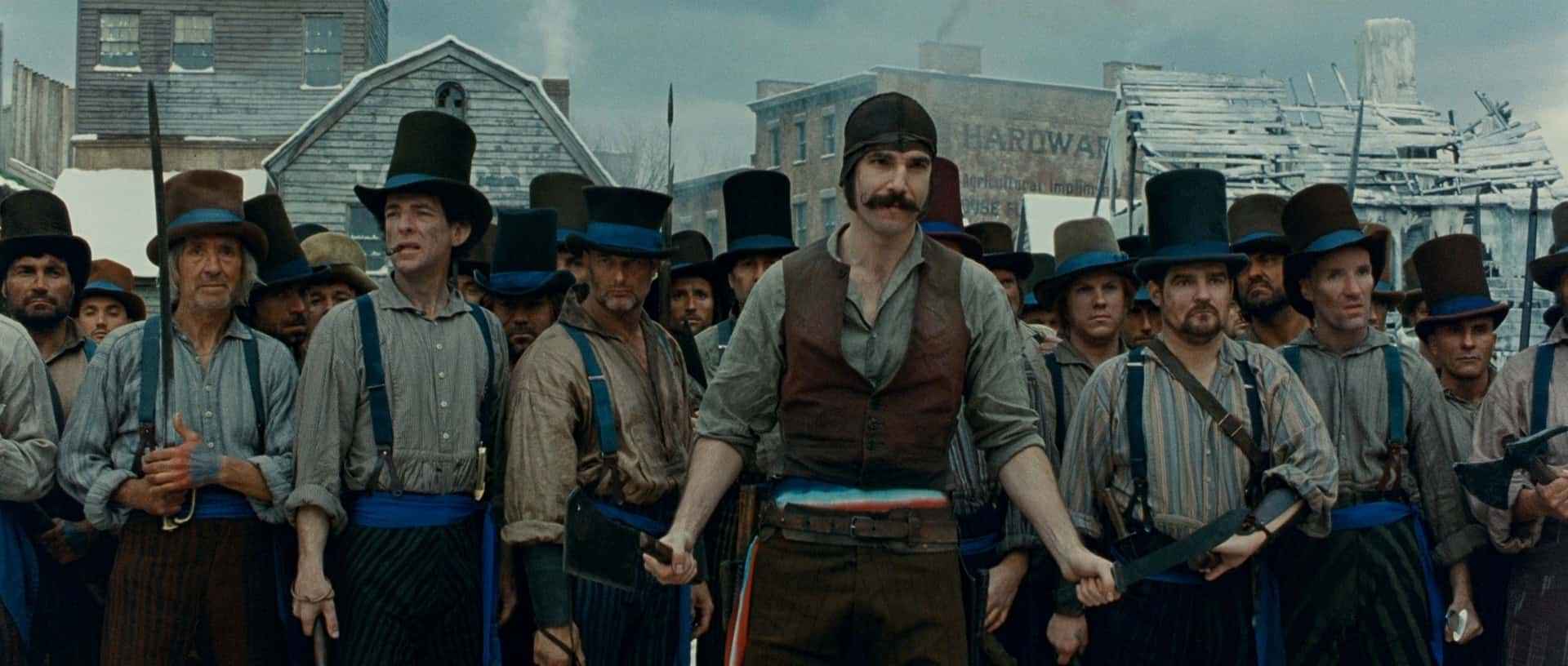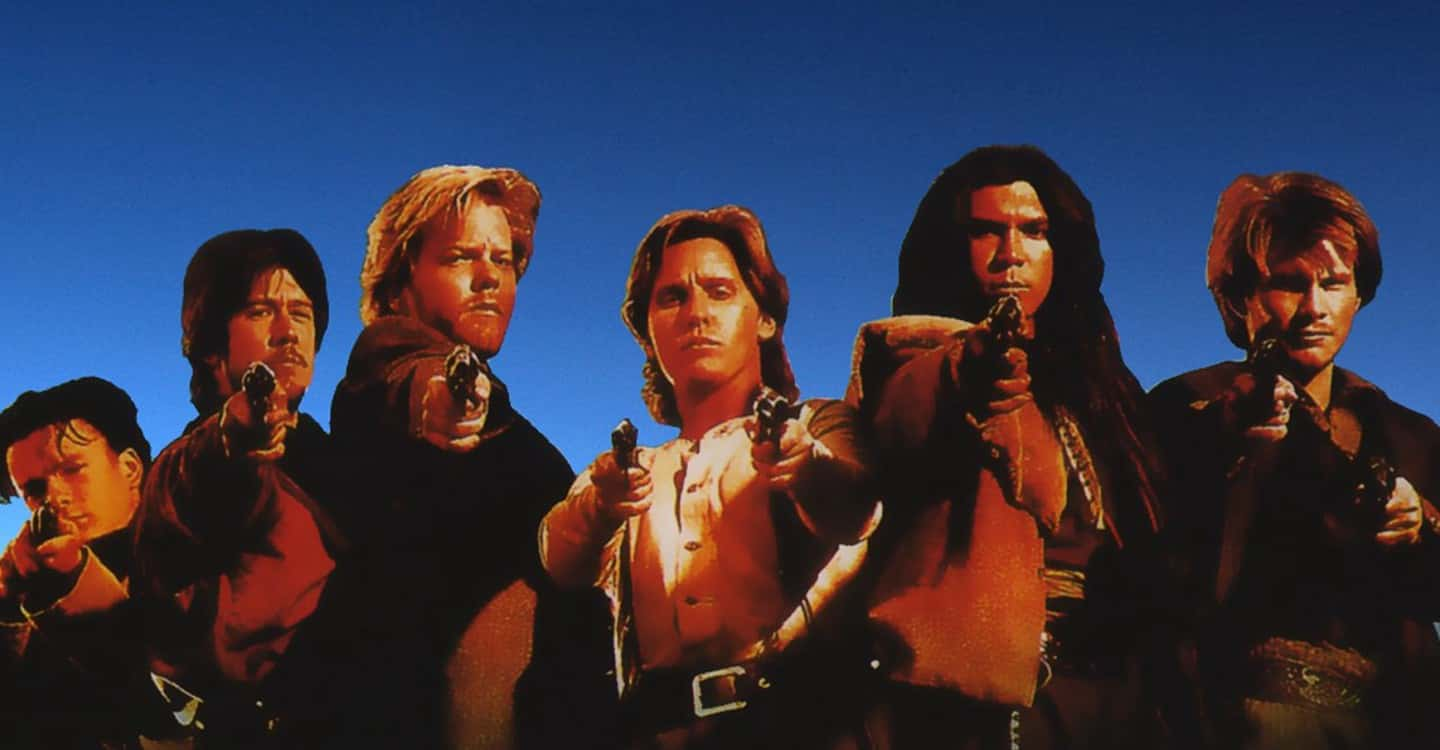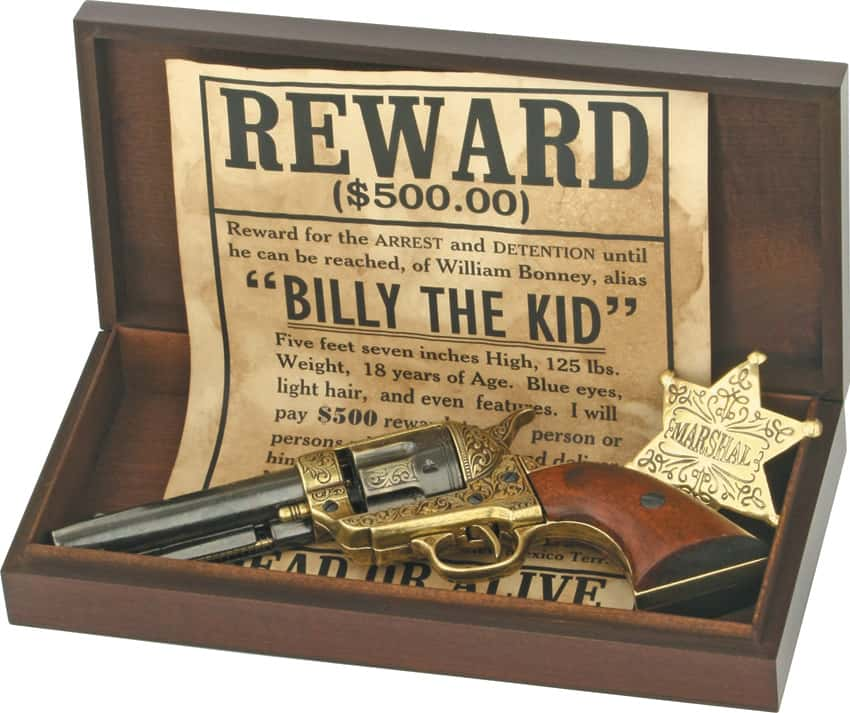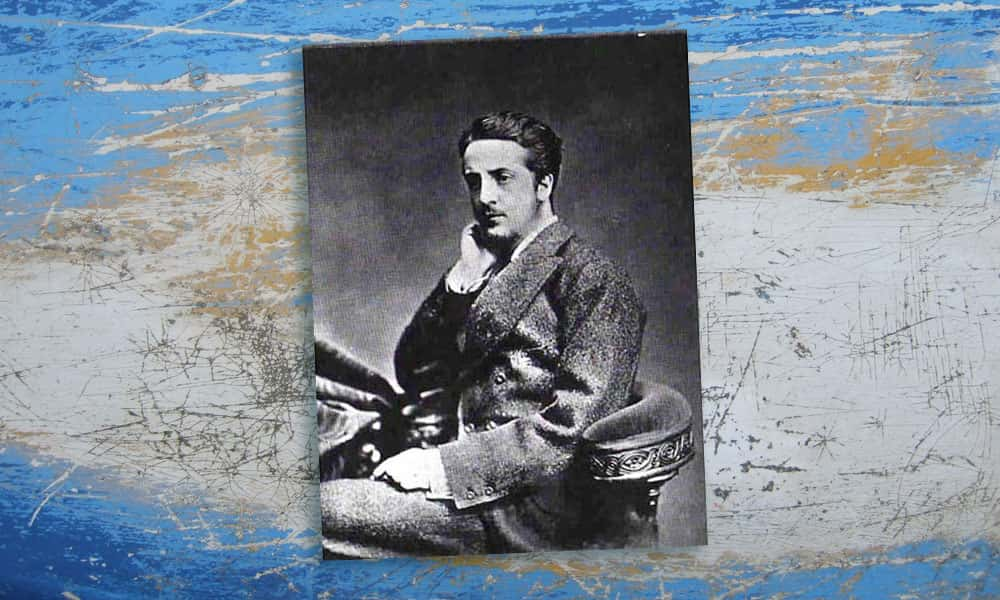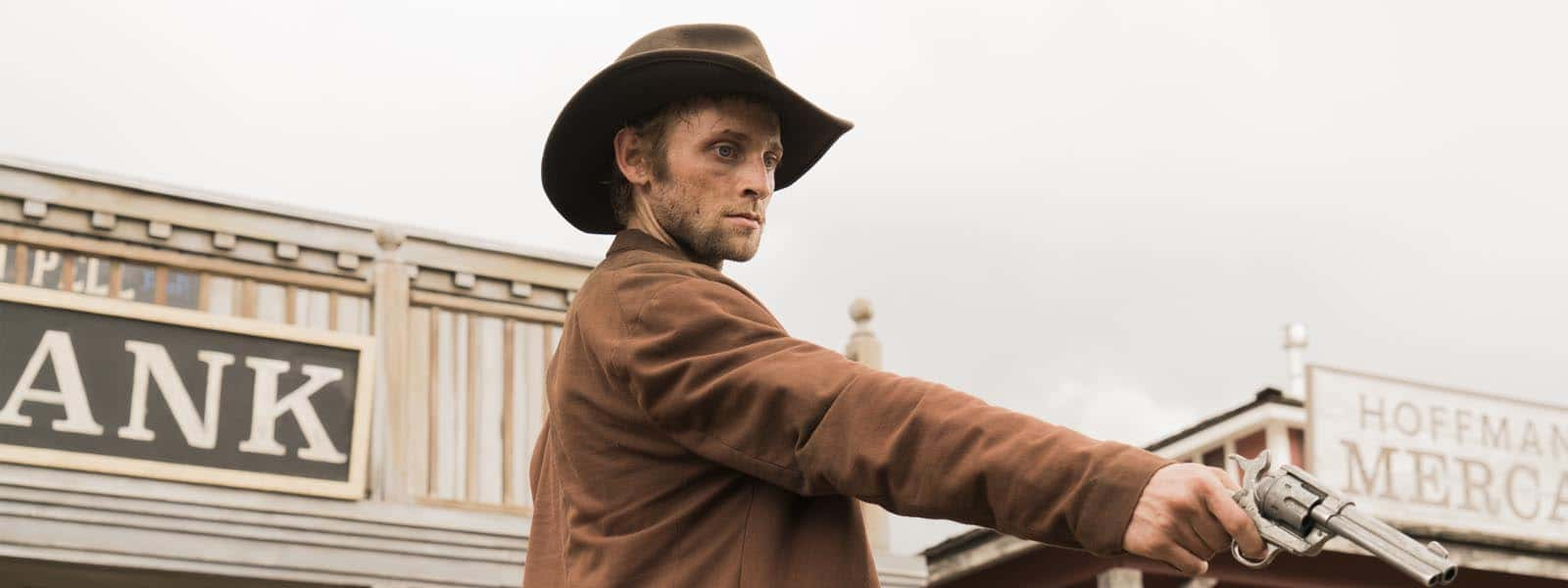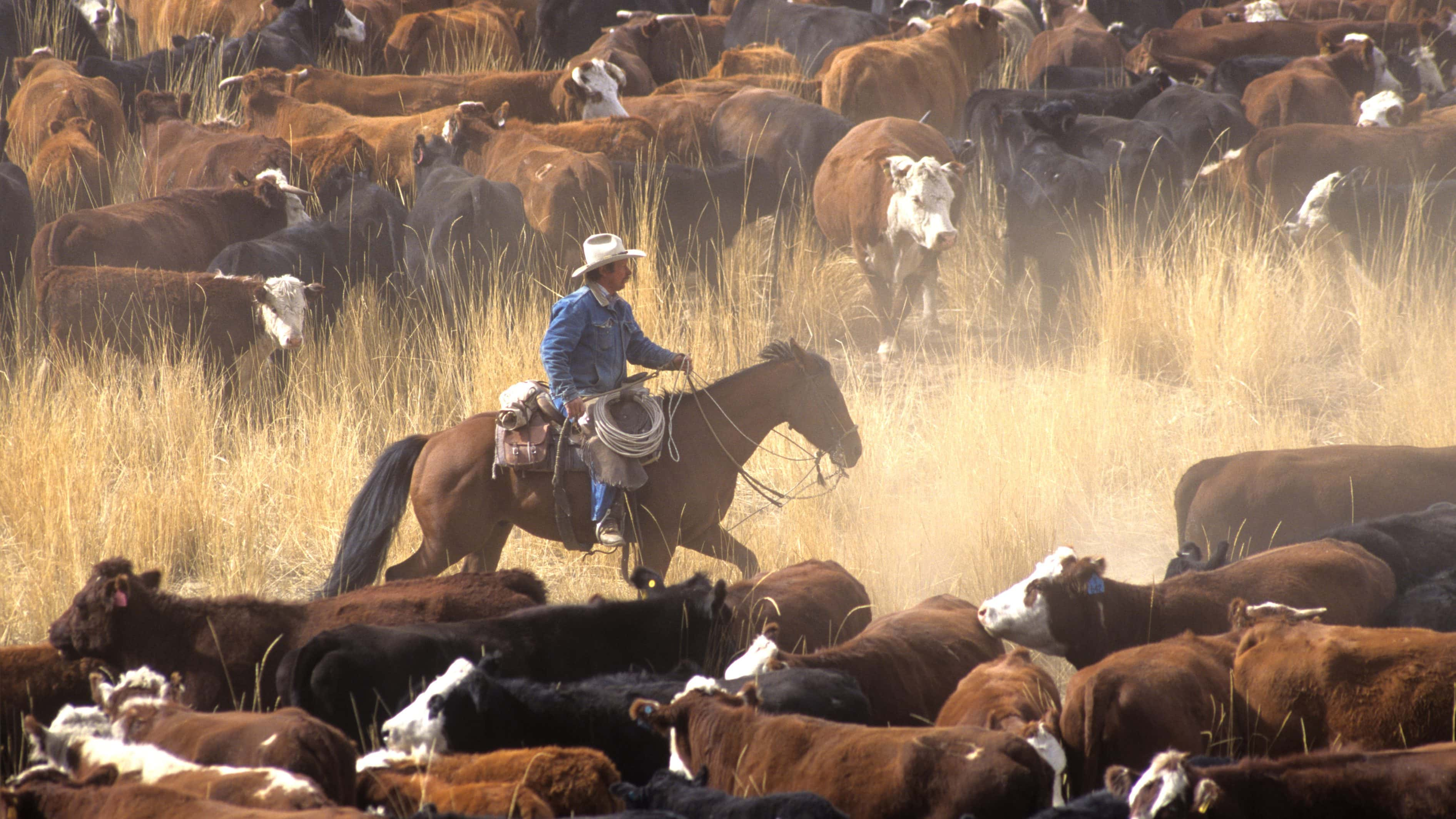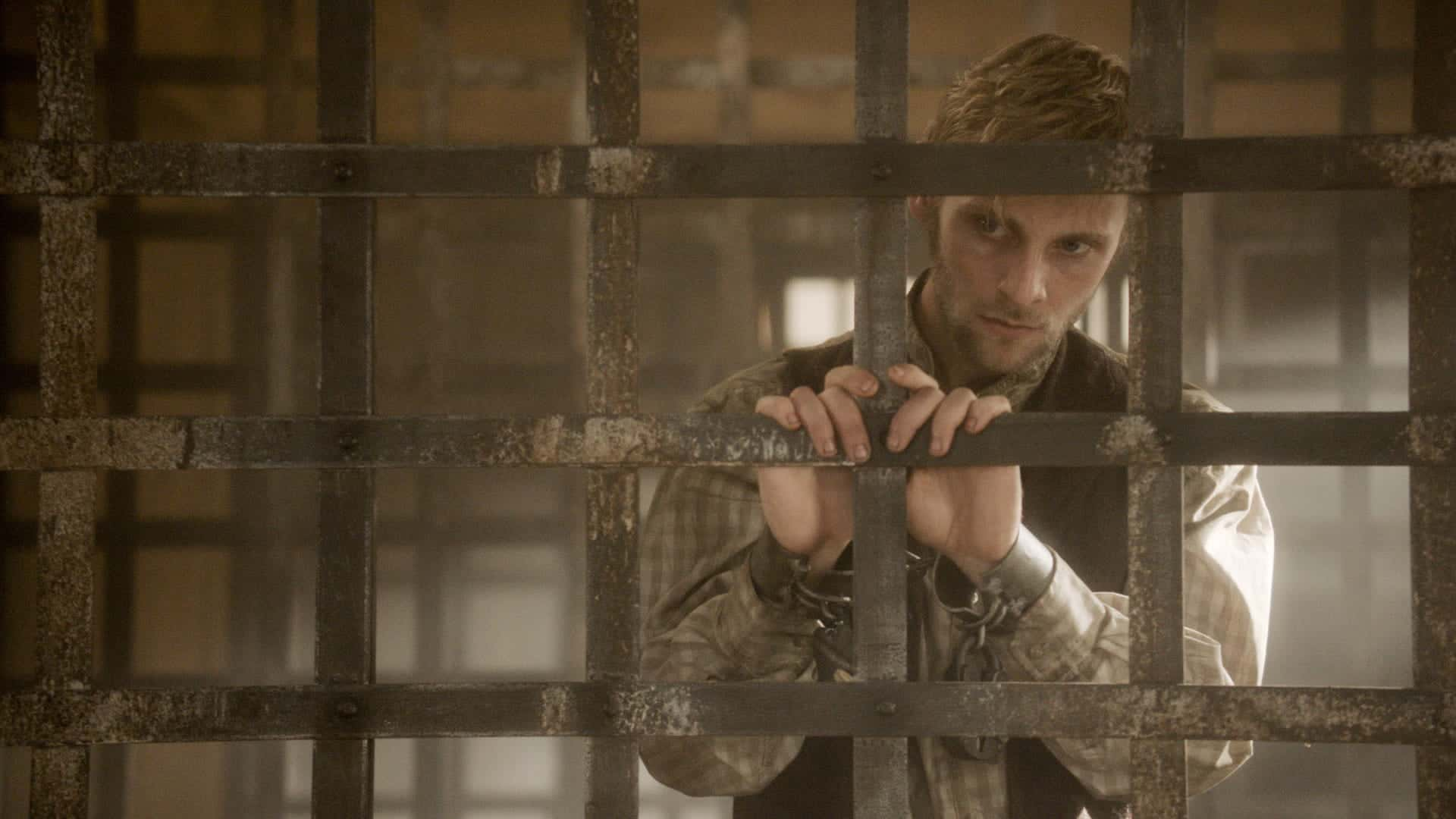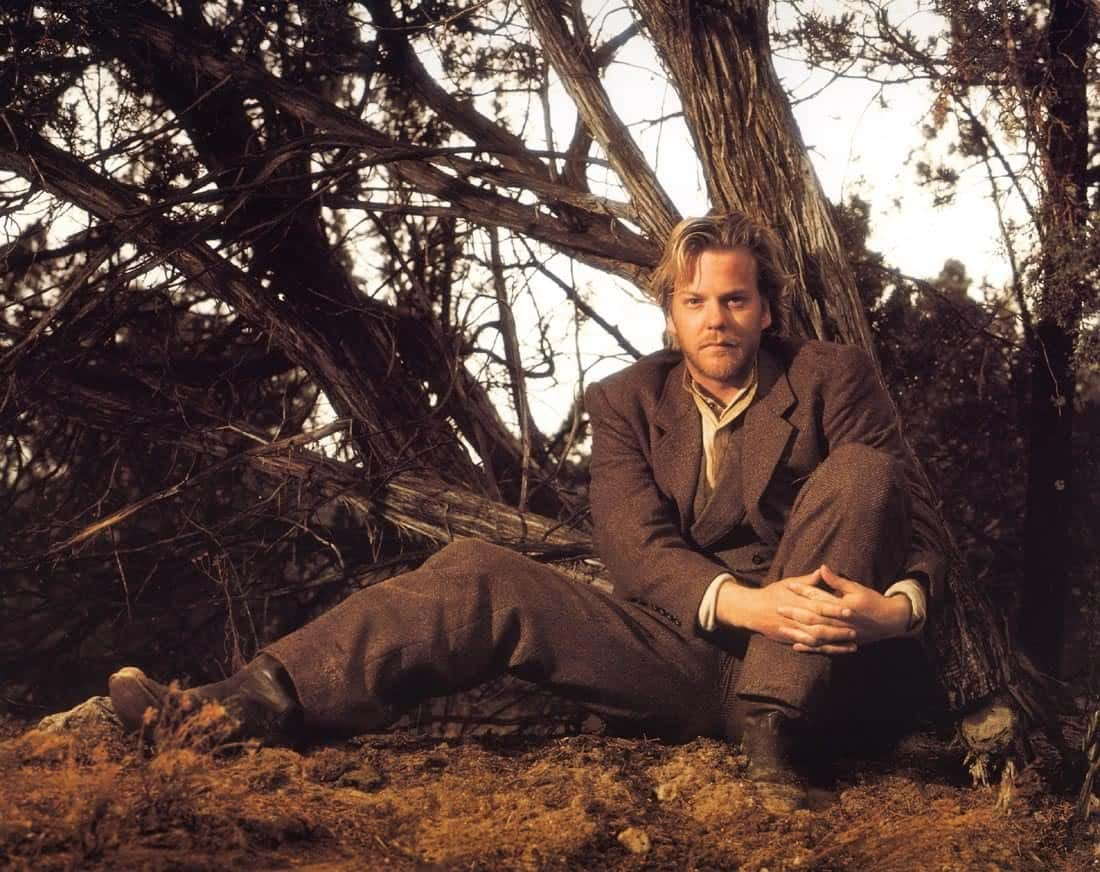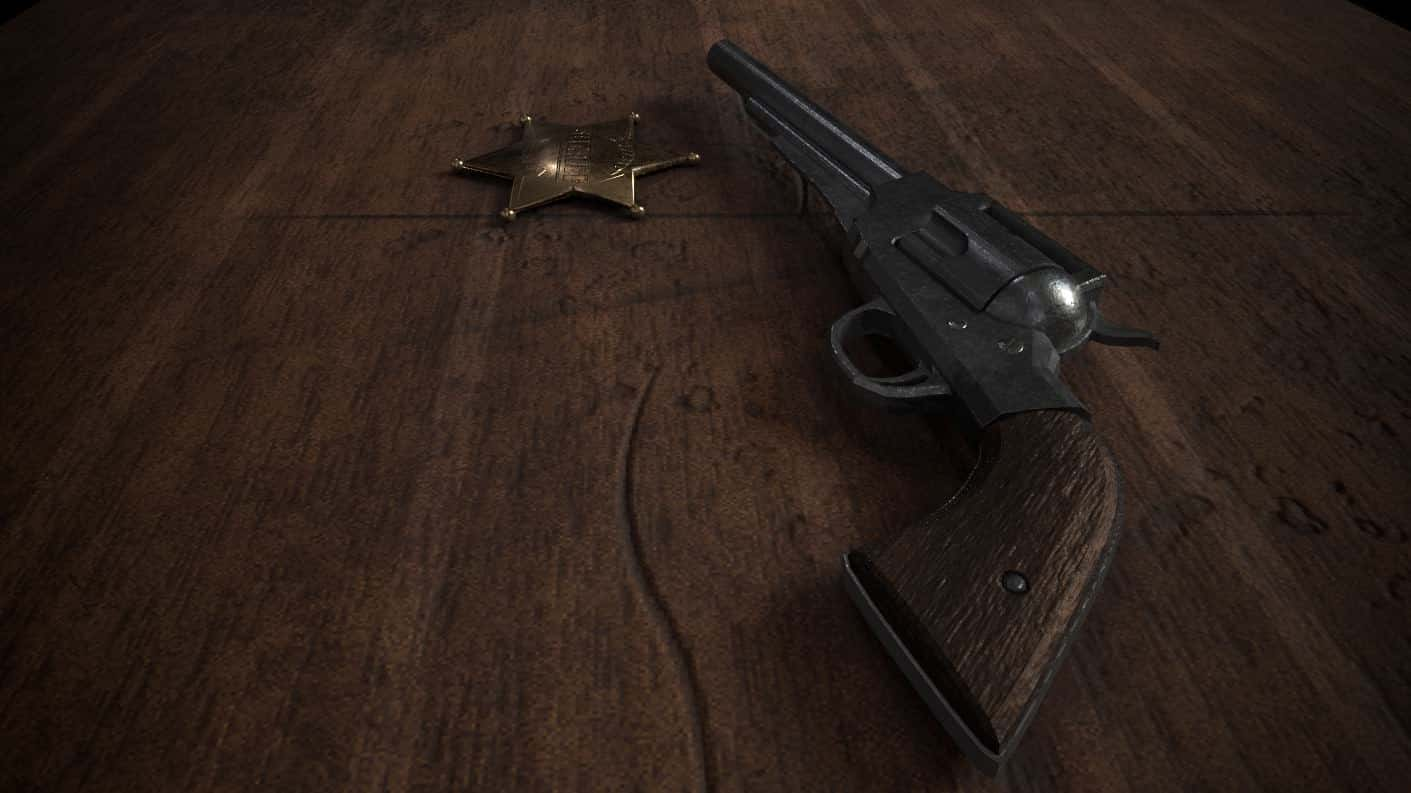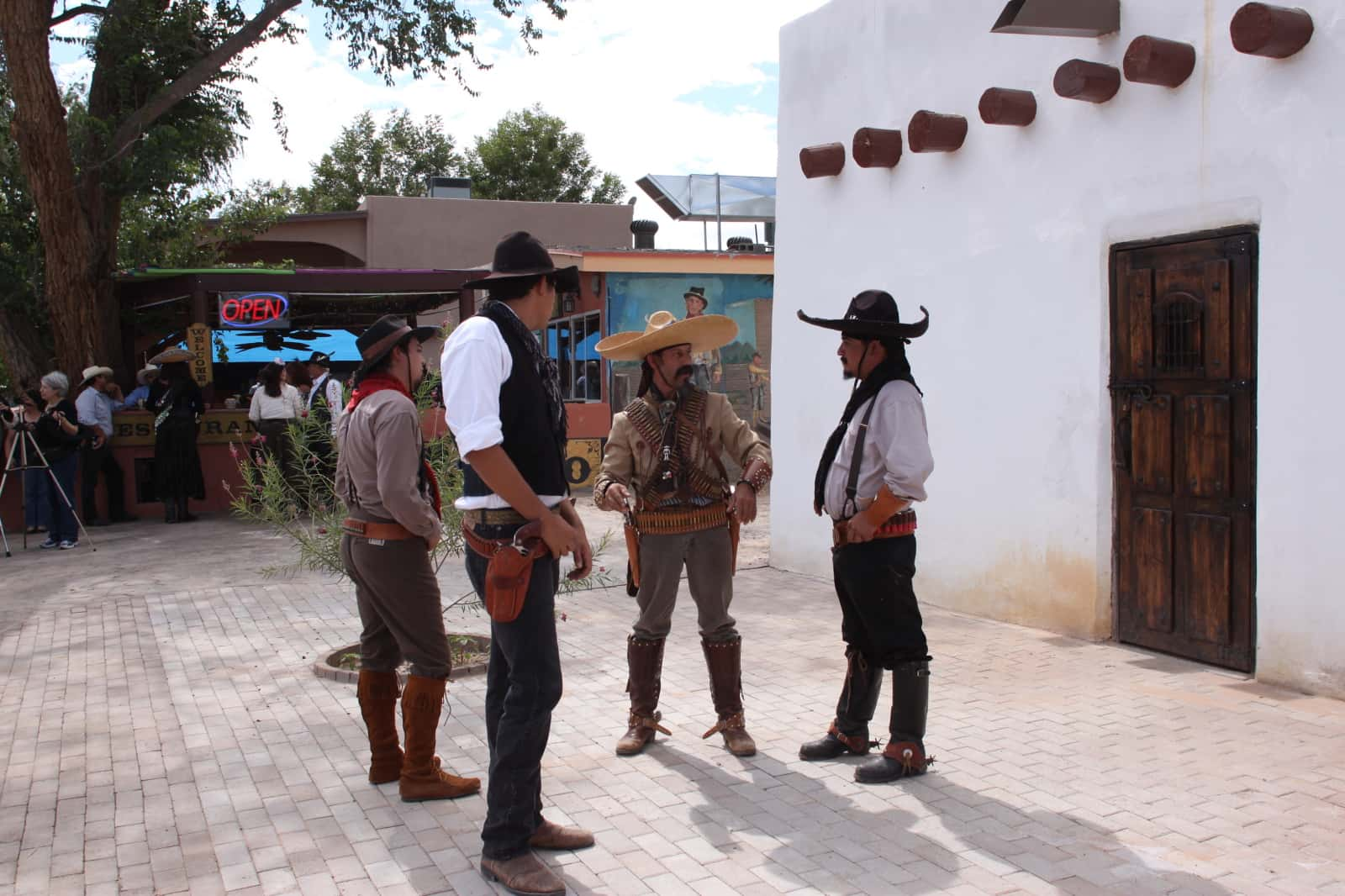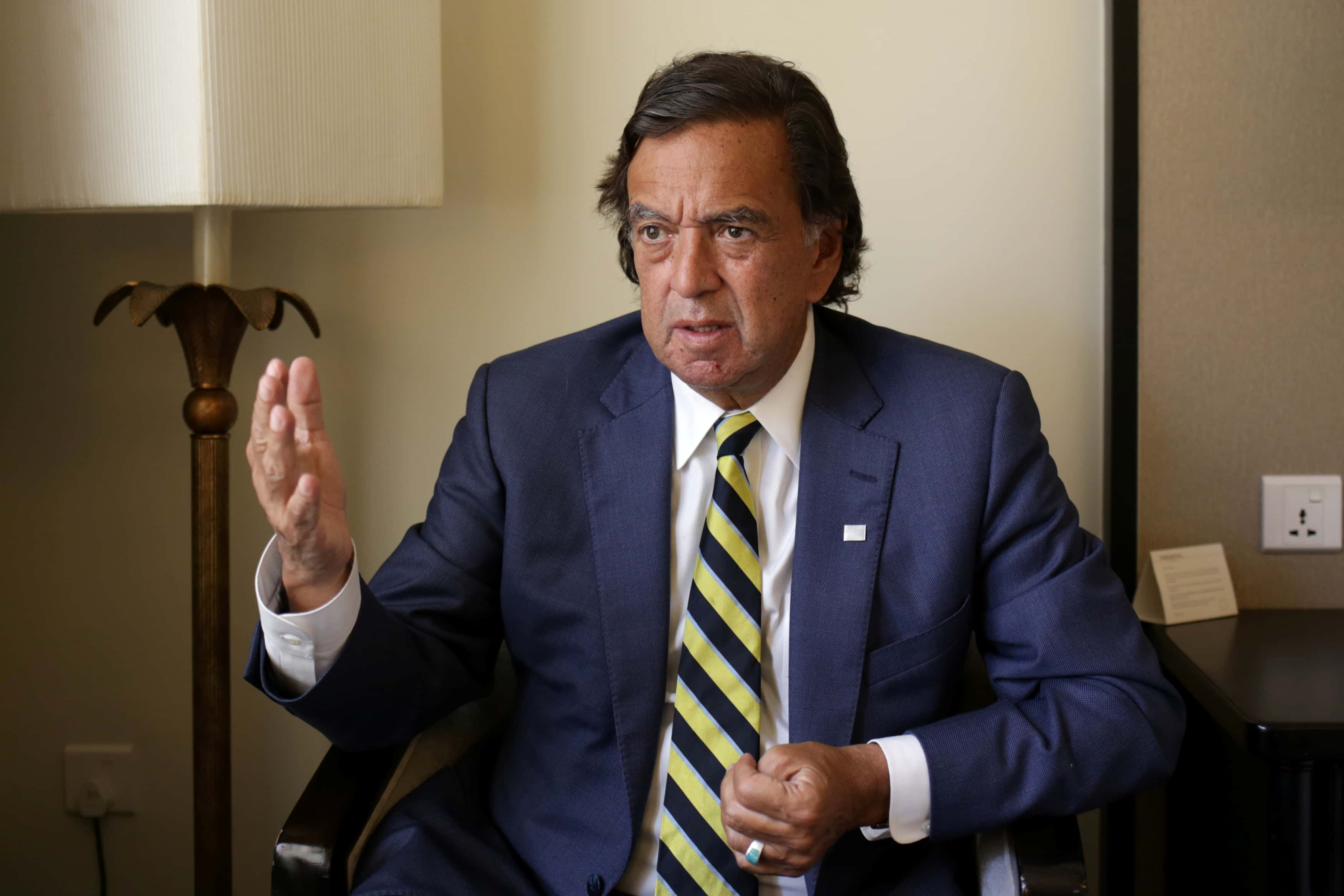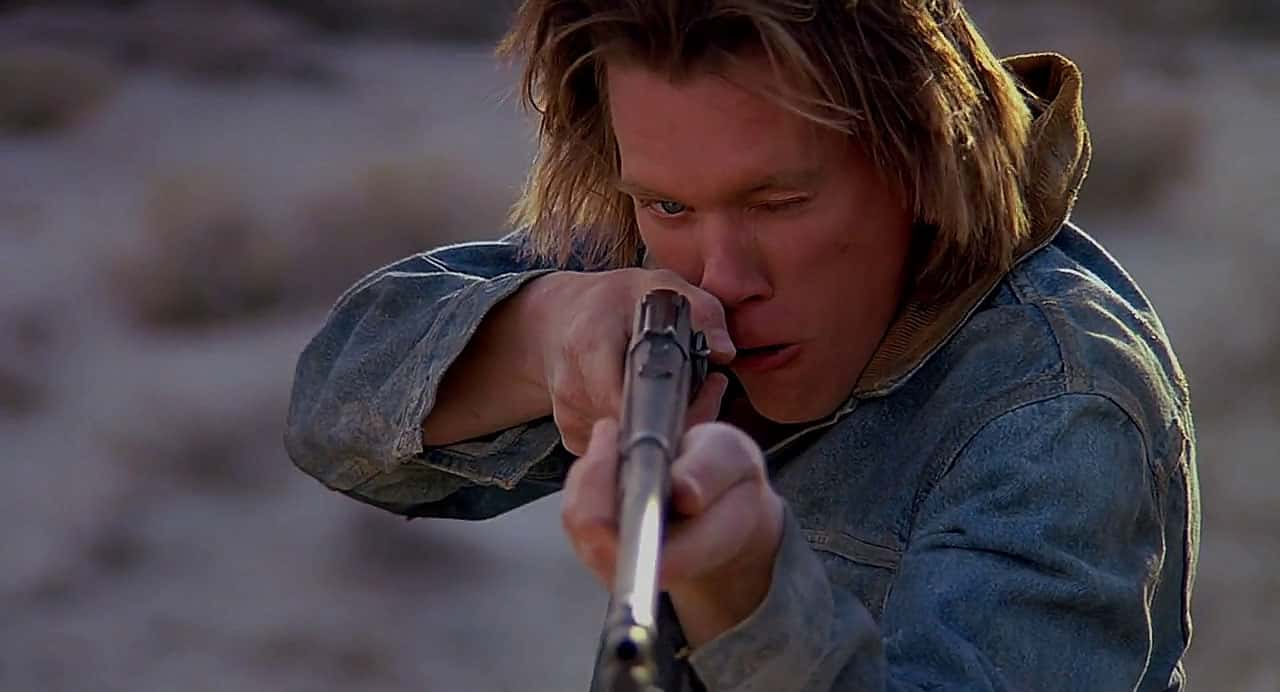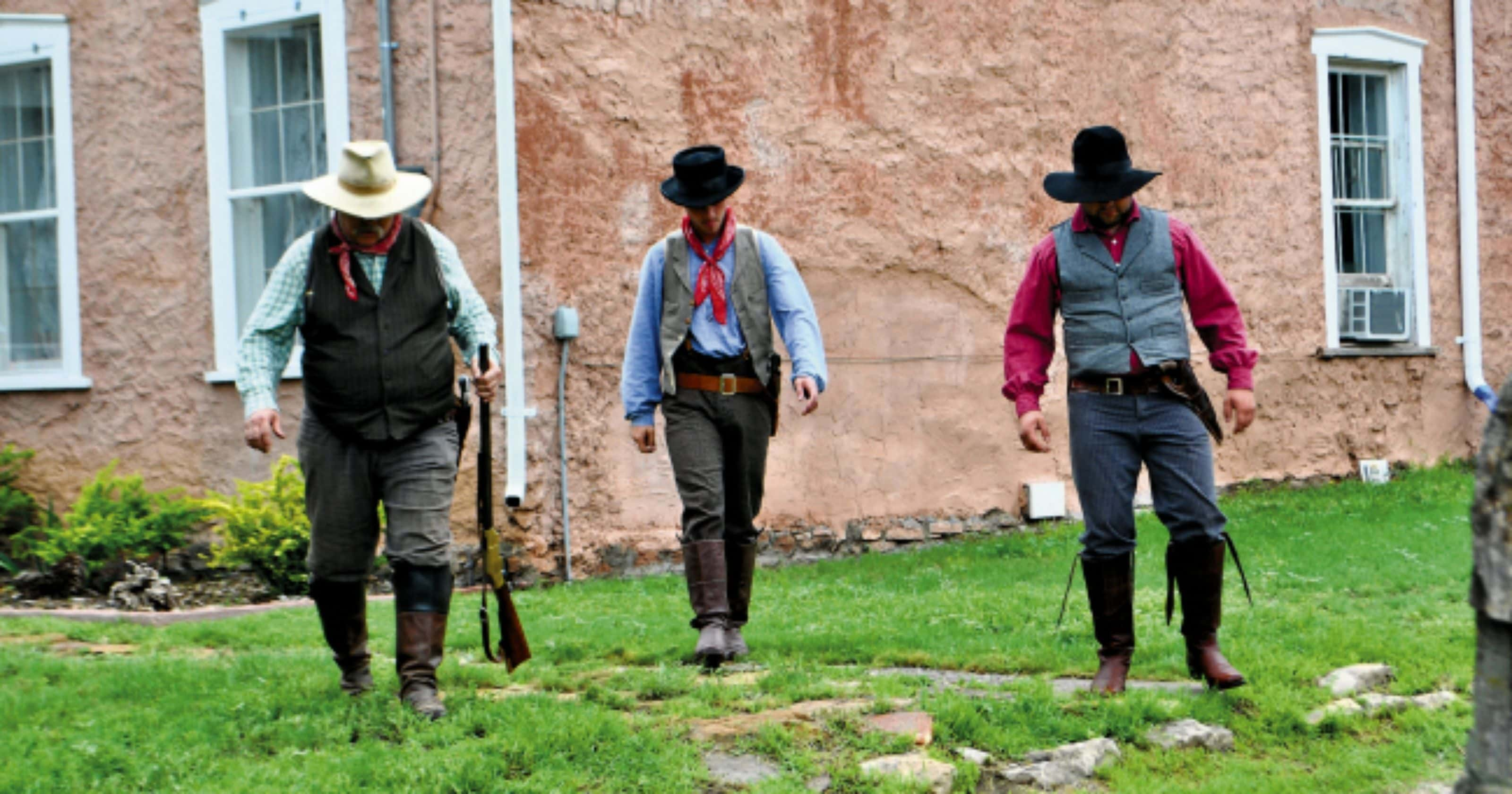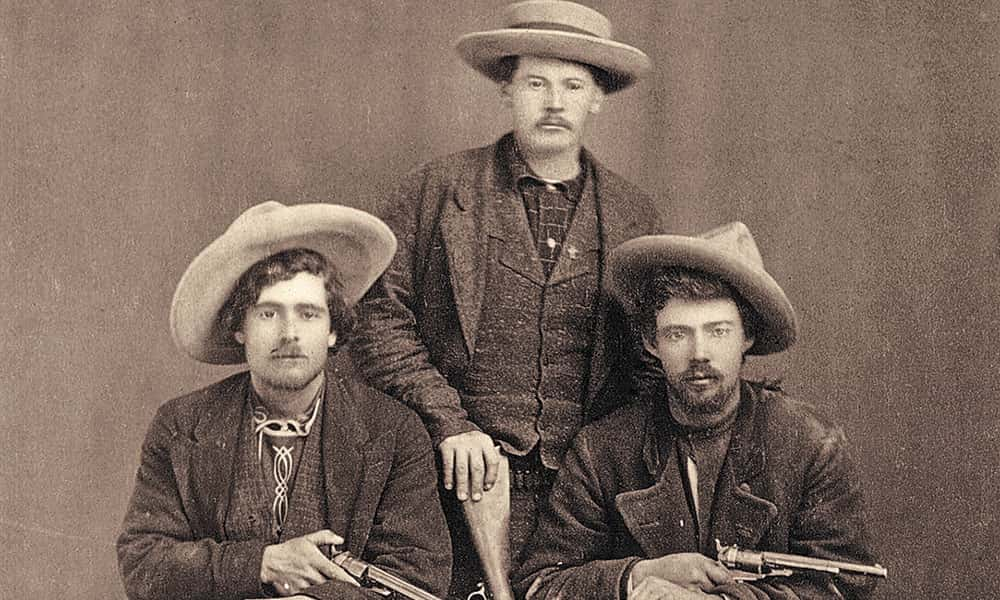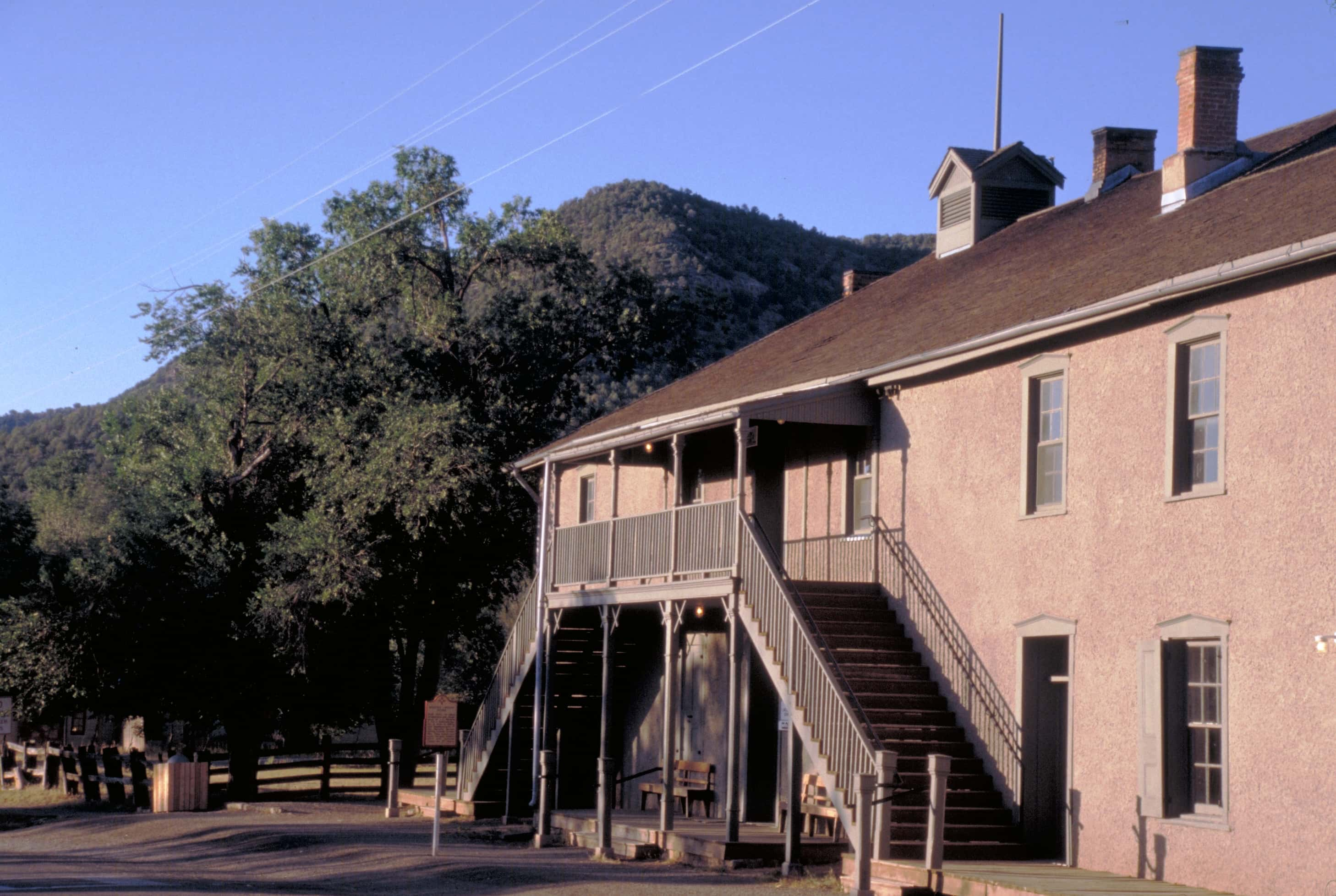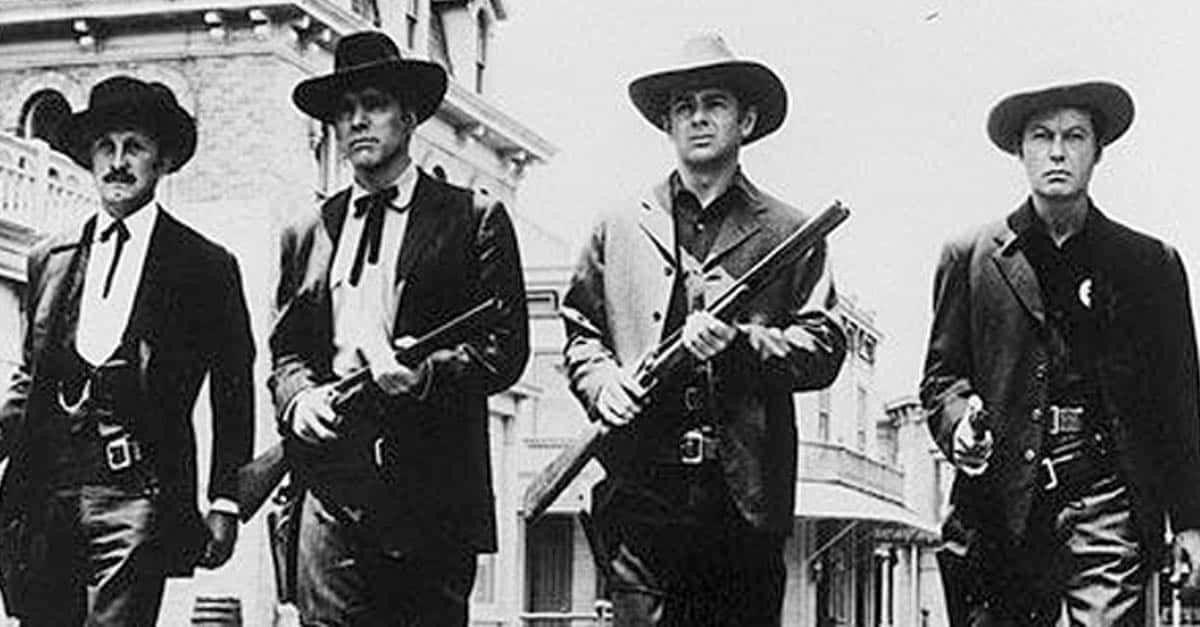The story of William H. Bonney has endured beyond the age of the Old West and continues to live on into the 21st century. There have been so many stories about this legendary figure that it’s can be hard to separate what’s real and what’s a tall tale. Here are 42 gun-slinging facts about Billy the Kid to separate the fact from the fiction.
Billy the Kid Facts
42. Where’d He Come From?
To this day, we have no concrete idea where and when Billy the Kid was born. Writer Ash Upson said that the Kid’s birthday was November 23, 1859. November 23 was also Upson’s birthday—curious. Either it’s a massive coincidence, or Upson was just trying to fill in the gaps of what wasn’t known about the famous outlaw.
41. Give Us a Guess At Least!!
At the time of the Kid’s death, his location of birth was frequently given as New York City, so either everyone was jumping on one person’s original lie, or he may very well have been born in the Big Apple. If so, he didn’t stay there long, and given what Gangs of New York tells us about that time period, we can’t blame him for leaving.
40. Is That My Name? Depends, Are You a Cop?
William H. Bonney wasn’t Billy the Kid’s real name. It was one of several aliases which the Kid used in his life, one of which was Kid Antrim, inspired by Billy’s stepfather’s surname, William Antrim. Allegedly, his real name was Henry McCarty.
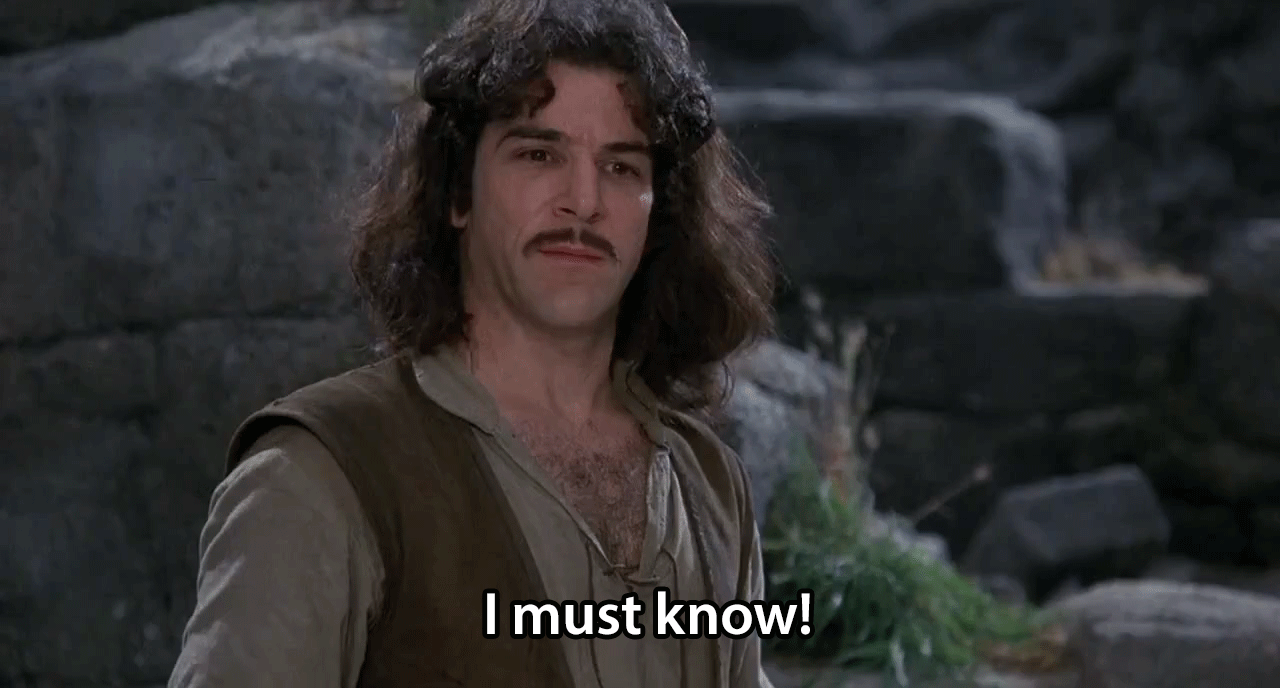 Pinterest
Pinterest
39. Fame is Fleeting? Not for Me!
While some legends only grow after death, Billy the Kid was already famous in his lifetime. Stories of his exploits were reported as far away as New York City while he lived. The name and the legend only got more notorious as time went on, culminating when acclaimed actors like Kris Kristofferson, Val Kilmer, Paul Newman, and Emilio Estevez each took on the role of Billy in a stream of movies about the famous figure.
38. Popular Character
The first film about his life came out as early as 1911. Billy the Kid was a silent film which was the first of over 50 movies made so far about this outlaw’s brief yet infamous life.
37. A Movie that Even Nicolas Cage Would Turn Down
Often, B-movies are like mainstream movies, but with an extremely bizarre take on their subject matter. Billy the Kid didn’t come away unscathed from a truly odd team-up. The 1966 film Billy the Kid Versus Dracula pitted the youthful outlaw against an ancient supernatural monster. This low-budget movie was 73 minutes long and was shot in eight days. As if that wasn’t enough, this gem of a film was paired up for double features with another film, titled Jesse James Meets Frankenstein’s Daughter. We wish we were kidding.
36. Well That’s a Theory
According to a representative of Saint Peter’s Church in New York City, they have a record of Henry McCarty’s baptism from September 28, 1859. It certainly serves as a decent pinpoint for a time when Billy the Kid was known as Billy the Baby.
35. The Crossover That Could Have Been
One famous story alleges that Billy the Kid stopped at a restaurant in Las Vegas, New Mexico, and met a man named Thomas Howard. The two men got along well enough, so Howard invited Billy to join his gang. Not so crazy, right? Well, Thomas Howard was an alias used by the notorious outlaw Jesse James. Billy reportedly declined his offer, and both men would end up dead within a year of each other—Billy in 1881, James in 1882.
34. Music to My Ears
In more recent years, movies about Billy the Kid have found themselves attracting renowned musicians to not only act in the films, but also provide some of their best music to the project. Sam Peckinpah’s Pat Garrett and Billy the Kid featured renowned country musician Kris Kristofferson as the Kid, with folk legend Bob Dylan playing a small role. He also wrote and recorded his iconic song “Knockin’ on Heaven’s Door” specifically for that film’s soundtrack. Twenty years later, Jon Bon Jovi recorded the song “Blaze of Glory” for the film Young Guns II. It went on to be a number 1 hit; in fact, it was Jon Bon Jovi’s only number 1 hit as a solo artist.
 Youtube
Youtube

History's most fascinating stories and darkest secrets, delivered to your inbox daily.
33. He Didn’t Show Up to be Photographed
Anyone who tries to sell you a replica of the old “Wanted” posters issued to capture Billy the Kid is a liar. The Kid never got his own “Wanted” posters. The closest he got was an ad which Governor Lew Wallace placed in the Las Vegas Gazette. He offered $500 for the capture of William Bonny. Even his alias wasn’t properly spelled! It didn’t seem like he was as wanted as they’d have you think!
32. My Mentor? Not Really
In 1877, Billy the Kid began work under the rancher, John Tunstall, who famously opposed the powerful Irish-American businessmen Lawrence Murphy, James Dolan, and John Riley. Contrary to what many movies claim (we’re saying that a lot today, aren’t we?) John Tunstall was not a father figure to Billy the Kid. Tunstall was only 24 when he died, and in his personal letters, he never mentioned Billy at all.
31. I Ain’t Left-Handed
The popular theory that Billy the Kid was left-handed comes from a famous photograph where his gun holster is on his left side. However, the photograph was actually flipped due to a technical error with the old-time camera. The theory now is that Billy was right-handed, or at least ambidextrous.
30. Now That’s Debt Collecting
One of Alexander McSween’s business associates was the wealthy rancher John Chisum. After the Lincoln County War, Billy the Kid rode to Chisum’s home and insisted that Chisum pay a $500 debt which Chisum owed him. Chisum denied the debt, saying he’d more than paid it off with the help and supplies he’d given to Billy and the other Regulators. Billy responded to this reasoning by stealing $500 worth of cattle from Chisum.
29. Choose Your Enemies Wisely
Regarding Billy’s treatment of John Chisum, don’t feel too bad for him. The man was incredibly wealthy, so $500 wasn’t a huge loss on his part. Not to mention the fact that Chisum, along with James Dolan, would later persuade Pat Garrett in 1880 to run for the office of Lincoln County Sheriff and hunt Billy the Kid down.
28. Imposter!
Despite Billy’s reported death in 1881, a senior citizen named Ollie ‘Brushy Bill’ Roberts claimed in 1949 that he was Billy the Kid. In Brushy Bill’s story, he had escaped death and gone on to live a long and peaceful life. He even approached the governor of New Mexico at the time, requesting that he get his pardon at long last. Roberts’ claim was dismissed, presumably because he had come into the governor’s office wearing a tinfoil hat.
27. A Train? I Don’t Need No Stinking Train!
Despite what Billy Joel’s classic song would have you believe, Billy the Kid was unique among famous outlaws in that he never robbed trains or banks. He didn’t even hold up a stagecoach. The Kid was just fine with rustling cattle out in the countryside.
26. How Dare You Call Me Short-Tempered?!
According to men who knew Billy the Kid, he was a very easygoing young man who was always cool under pressure and tried to stay positive no matter what. Contrary to Pat Garrett’s claims, Billy never showed signs of having a nasty temper, not even when he was taunted and mocked by Bob Olinger during his brief imprisonment.
25. Rumors of My Kill Streak Have Been Greatly Exaggerated
Billy the Kid did not, in fact, murder 21 people during his life. Based on what is known, and some hypothesizing, Billy seems to have been responsible for up to nine deaths, and his involvement in five of those deaths was as one of several of the Regulators.
24. Better You than Me
Billy the Kid’s first confirmed killing took place on August 17, 1877. Billy was in the small town of Bonita when he got into a disagreement with a man named Francis Cahill. Cahill repeatedly mocked and bullied the younger man, until Billy replied by insulting Cahill back. Spoiling for a fight, Cahill attacked Billy. Both men reached for Billy’s gun, leading to Cahill being shot and dying of his wounds that day while Billy fled to avoid prosecution for the death.
 Youtube
Youtube
23. The Best of Foes
Contrary to what films like Pat Garrett and Billy the Kid, the Young Guns films, and others have claimed, Billy the Kid and Pat Garrett were never friends before Garrett was assigned to hunt Billy down. It does make for a more dramatic third act, though, so who can blame the filmmakers for fudging the story a bit?
 Film Society of Lincoln Center
Film Society of Lincoln Center
22. Time to Regulate Some Justice!
After the murder of John Tunstall, his former ranch hands, including Billy the Kid, became a deputized posse known as the Lincoln County Regulators, allied to Tunstall’s former lawyer Alexander McSween. The Regulators had 24 confirmed members, of which Billy was by far the youngest member. No wonder he was known as the Kid.
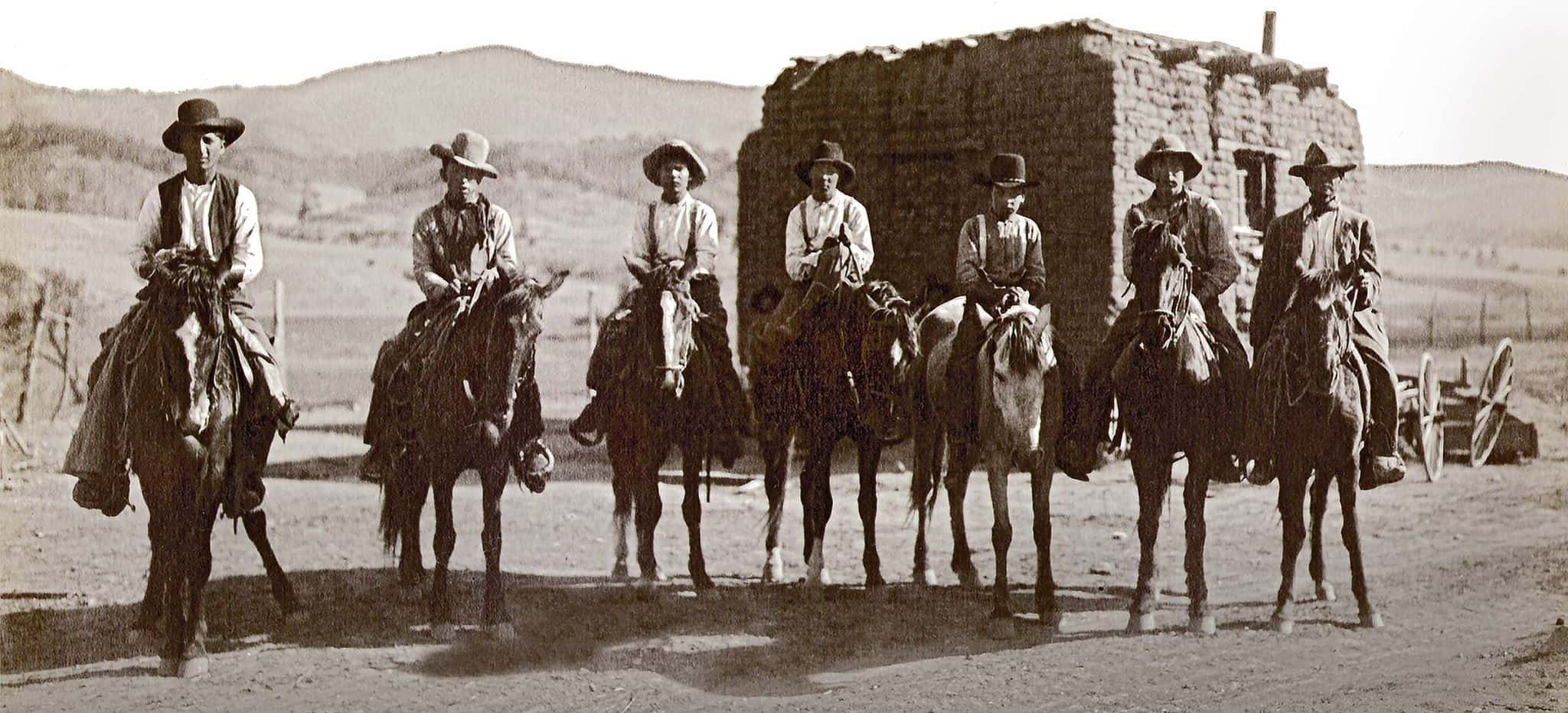 Lincoln County Historical Society
Lincoln County Historical Society
21. Don’t Mind Me, You Decide Things
Surprisingly, despite Billy the Kid’s emergent fame due to his involvement with the Regulators, he never led the Regulators during their involvement in the Lincoln County War, as it’s now known. The Regulators went through three leaders, two of whom (Dick Brewer and Frank McNab) were killed, while the third was Josiah ‘Doc’ Scurlock. According to Regulator Frank Coe, Billy never tried to push for the spotlight during the conflict, and never tried to take the leadership for himself. Sounds like quite the humble guy!
20. I’ve Got Better Things to Do!
Dealing with Billy the Kid was undoubtedly a huge frustration for Governor Lew Wallace, but Wallace had an excellent way to release stress—he was a novelist on the side. In fact, while Billy the Kid was running amok in 1880, Wallace released a book for which he would forever be known: the historical adventure story Ben-Hur: A Tale of the Christ.
19. Reap the Whirlwind, Brady
One of the men involved in the murder of John Tunstall was Lincoln County Sheriff William Brady. The Regulators didn’t take kindly to the sheriff betraying his office to take sides in a ranchers’ war. On April 1, 1878, while Sheriff Brady and four of his deputies were walking down Lincoln’s main street, Billy and five of the other Regulators ambushed them—sadly, this did not involve Billy the Kid skipping behind them and yelling “April Fools!” when he started shooting. The Regulators shot Brady and one of his deputies, George Hindman, who had allegedly been one of the men to shoot Tunstall.
18. In Hindsight…
His desire to avenge John Tunstall in the Lincoln County War would eventually come back to haunt Billy the Kid when he was arrested and put on trial for Sheriff Brady’s murder. This was the charge which led to him being sentenced to death. Maybe shooting him in broad daylight on a main street was a bit too obvious?
17. Sometimes It’s Too Late to Say Sorry
In 2010, New Mexico governor Bill Richardson was requested to issue a posthumous pardon to Billy the Kid so that the original promise made by Governor Lew Wallace would finally be honored. Richardson refused, presumably restraining himself from screaming “who cares?!!”
16. Call Him the Kevin Bacon of the West
One of Billy the Kid’s associates was a man named Dave Rudabaugh, anachronistically named ‘Dirty Dave.’ Allegedly, he was the man who taught Doc Holliday how to shoot, before he had to flee from a little-known lawman named Wyatt Earp. The story goes that Earp and Holliday met and became friends when Earp approached Holliday for information on where Rudabaugh went. Rudabaugh eventually joined Billy the Kid until the 1880 ambush at Stinking Springs, when he was captured. However, Rudabaugh escaped imprisonment and joined the infamous Cowboy faction which would later fight face off against Wyatt Earp and his allies at the OK Corral, among other places. It’s debatable how involved Rudabaugh was, but he remains the only outlaw to cross paths with so many other legends of the Wild West. Sadly, this list of connections did him no favor when he fled to Mexico and met a violent end.
15. Stop Calling Me That!
Incredibly, Billy the Kid’s nickname may not have been a compliment at all. There is evidence to suggest that his nickname was given by a bartender who compared his appearance and wispy beard to a young billy goat (little goats are also called ‘kids’). Another theory states that Billy was called a Kid because of his youth and his slight, boyish appearance. Either way, not exactly a flattering reason to be called the Kid.
14. Bringing Soldiers to an Outlaw Battle?
In 1878, former Tunstall lawyer Alexander McSween, along with more than 40 of his supporters, including Billy the Kid and the other Regulators, were held under siege in Lincoln. The forces against them were initially around 60 men hired by the Murphy-Dolan faction and led by Lincoln’s new sheriff, George Peppin. After three days of gunfire across the town, a sizeable cavalry unit, led by Lt. Col. Nathan Dudley, arrived to settle things. By that point, it was just the people trapped in the McSween house who were still fighting, so the combined forces of the army and Murphy-Dolan men set fire to the house. The Regulators fled, leaving Alex McSween and four others dead, while only two men were killed on the other side. Despite the relatively few casualties, the size and scale of this confrontation have caused it to be known as the Battle of Lincoln. After this, the Regulators went their different ways, although Billy the Kid and a few of his closest friends didn’t take the hint and just kept going as usual.
13. I Survived Billy the Kid
One of the men siding with the Murphy-Dolan faction against the Regulators was a notorious outlaw and gang leader named John Kinney. He was present at the Battle of Lincoln and was allegedly injured when Billy the Kid fired a bullet into his face. Amazingly, he survived this injury and died peacefully of old age in 1919. No doubt he had the best story to tell at the retirement home.
12. Let’s Do Some Public Good to Do Me Some Personal Good
On February 18, 1879, Billy the Kid was a witness to the gruesome death of a lawyer named Huston Chapman. Billy approached governor Lew Wallace and offered to testify in exchange for a pardon for his actions during the Lincoln County War. To be honest, after his part in murdering a sheriff, along with being involved in the Battle of Lincoln, we have to admire Billy’s nerve for even bothering to try and make a deal.
 Pinterest
Pinterest
11. Who’s the Bad Guy Again?
Governor Lew Wallace agreed to allow Billy the Kid to testify in exchange for clemency and protection. Billy even agreed to a public surrender and arrest to make it extra official. However, after the Kid performed his end of the bargain, he wasn’t released, leading him to realize that he’d been duped. Unfortunately for the governor, Billy managed to escape and continue raising hell in the territory.
Jail
10. I Died Before my 21st Birthday, People!
Not surprisingly, Hollywood has an issue with casting actors who are the appropriate age to play the youthful outlaw onscreen. Val Kilmer was 30 when he appeared in Billy the Kid. Paul Newman was 33 when he played Billy in The Left Handed Gun. Kris Kristofferson was 37 when he played Billy in Pat Garrett and Billy the Kid. The one who came closest was Emilio Estevez, who was 26 when he first starred as the Kid in Young Guns. Despite the relative accuracy in the age of its star, that film also made Billy a bloodthirsty hell-raiser with one of the most contagious laughs in film history, although, to be fair, Young Guns was an exciting film despite its inaccuracies.
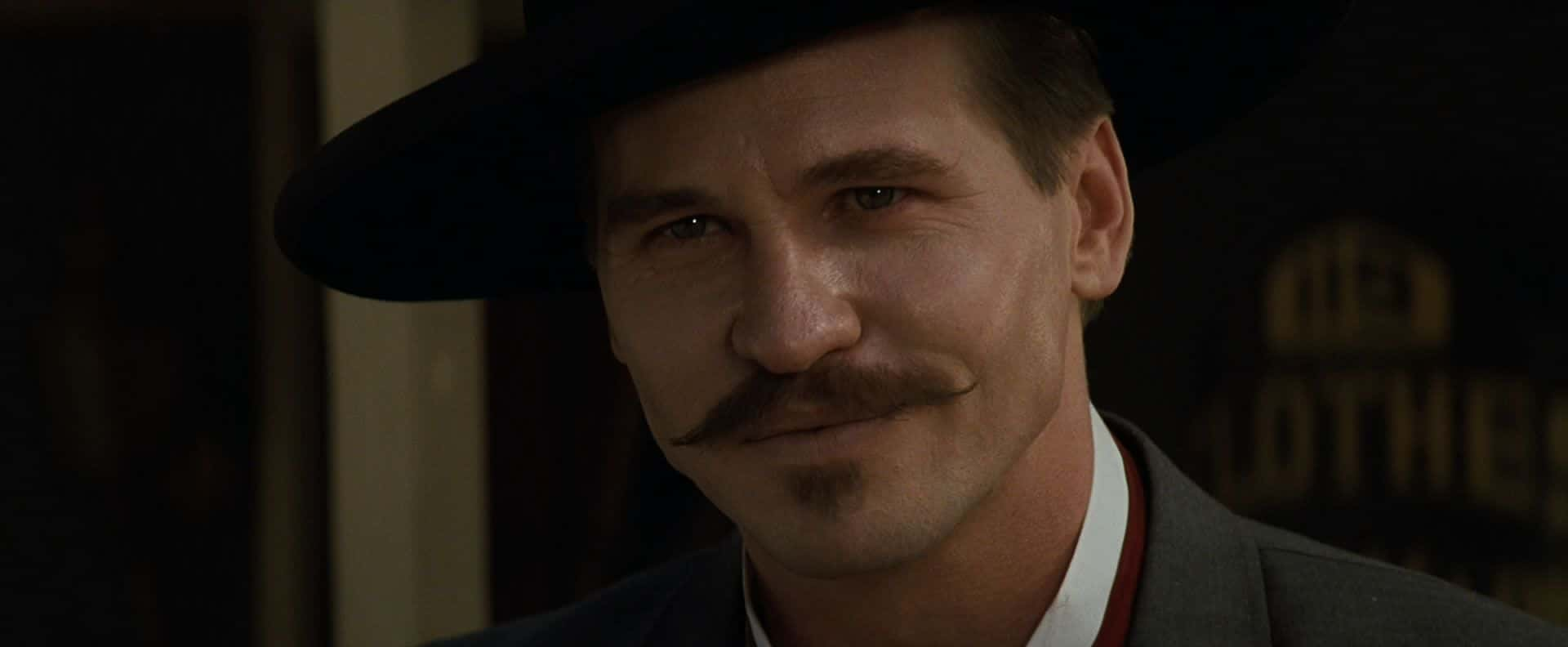 Pinterest
Pinterest
9. Can’t Teach an Old Gunman New Tactics
During the Lincoln County War, Billy the Kid and the other Regulators found their match, and it was just one man. In April 1878, the Regulators were hiding out at Blazer’s Mills after the murder of Sheriff Brady, when they saw that a 47-year-old frontiersman named Andrew “Buckshot” Roberts had wandered upon their hideout by sheer coincidence. Roberts is said to have been part of the group that murdered John Tunstall, so the Regulators presumably were more than happy to see him wandering up. When the Regulators tried to force him to surrender, however, Roberts went in with guns blazing. Just a reminder, he was facing off against Billy the Kid and about 14 other Regulators!
8. Can’t You Just Die?!
The gunfight should have ended immediately, as Buckshot Roberts was shot in the stomach almost immediately. However, he proceeded to wound three of the Regulators, even as the others ducked for cover. When he ran out of bullets in his rifle, Billy got up and rushed the old gunslinger. However, Roberts knocked him out cold with a single swing of his rifle butt. Definitely not the high point of Billy’s outlaw life!
7. Never Fight Fair
In 1880, Billy the Kid was hanging out in a saloon when he noticed a bullying drunk named Joe Grant shooting his mouth about wanting to kill someone. Deciding he’d have some fun with the buffoon, Billy complimented Grant’s pistol, secretly spinning the cylinder so that it would fire on an empty chamber if he tried to fire. Lo and behold, Grant later approached Billy and tried to shoot him in the back. Billy turned around and shot him dead in turn, presumably while laughing at the look on Grant’s face.
 Pinterest
Pinterest
6. Just a Brisk Walk
After the death of Francis Cahill, Billy the Kid stole a horse and fled Arizona for New Mexico, where he’d stay for the rest of his life. On the way, however, Billy was robbed of his horse by Apaches. This meant that Billy had to walk for miles in the wilderness to reach civilization again. This walk very nearly killed him, in fact, before he finally made it to Fort Stanton in the Pecos Valley. Sadly, getting a taste of his own medicine wasn’t enough to make him turn his life around.
5. He Wasn’t That Good After All
One of the most enduring legends of Billy the Kid took place during his trial in April 1881. According to said legend, when Judge Warren Bristol sentenced him to hang until he was “Dead, dead, dead,” Billy was asked if he had anything to say, whereupon he gleefully to the judge to go to “Hell, hell, hell!” However, the historical record reports that Billy was silent, declining the chance to say any final words.
 Texas State Historical Association
Texas State Historical Association
4. Don’t Forget the Fabric Softener!
Billy the Kid’s first reported criminal act occurred in 1877—which, if the 1859 birth year can be trusted, would have made him 14. So what was this dastardly deed which turned Billy to a life of crime? He helped another man steal clothes from a Chinese laundry. Yup, you heard right. Allegedly, Billy hid his valuable stash of clean clothes in his boarding house until his landlady reported him to the authorities. Billy escaped arrest, however, and fled town. At least he would have been able to come up with a good disguise with his loot!
3. A Minor Blood Debt
One of Pat Garrett’s deputies on the hunt for Billy the Kid was Bob Olinger. Olinger was reputed to be a bullying man who wasn’t above shooting a man the back. He had also allegedly shot a friend of Billy’s, earning the Kid’s hatred. Naturally, Olinger was chosen, along with James Bell, to guard Billy in Lincoln after his sentencing.
2. You Can’t Say He Wasn’t Polite
There are two stories as to how Billy the Kid managed to escape his imprisonment by Bob Olinger in Lincoln. In one story, a friend left a gun for him in the outhouse that he was permitted to use, while in the other version, his small hand slipped through a manacle and allowed him to take James Bell’s gun away. Both versions, however, include the famous way that Billy the Kid got his revenge on Bob Olinger. Olinger heard the gunshot which killed Bell, mistakenly thought that Bell had shot Billy, and ran back to the building where Billy was being held. Billy then appeared in one of the windows holding Olinger’s shotgun, shouted “Hello Bob!” and killed Olinger with a blast from both barrels. Of course, even this amazing moment of history still had to be embellished later on in movies like Young Guns II, with Billy shouting “Goodbye Bob!” after he’d shot him.
1. Lost in Translation
While Billy was on the run from the law, Sheriff Pat Garrett heard that the outlaw was in Fort Sumner. Garrett went straight to Pete Maxwell, a contact of Billy's in the area. Garrett questioned Maxwell for several hours in his bedroom, when suddenly (and quite by chance) Billy himself walked into the room around midnight. Reportedly, Billy couldn't see much in the bedroom, and before he had a chance to shoot his gun at the interloper or even recognize him as friend or foe, Garrett had shot Billy in the heart. Contrary to popular belief, Billy the Kid’s last words were not “Who’s there?” (or "Who's that?"). Well, they were, but they weren’t spoken in English, they were in Spanish. He had learned Spanish at a young age, and Fort Sumner had a high Hispanic population, with whom he was on very friendly terms. Not to mention that he didn’t expect Sheriff Pat Garrett, of all people, to be waiting for him.
Sources: 1, 2, 3, 4, 5, 6, 7, 8, 9, 10, 11, 12, 13, 14, 15, 16, 17, 18

